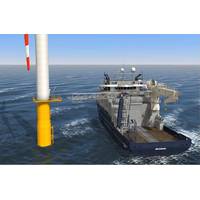
Plymouth University, Kongsberg Digital Partner to 'Revolutionize' Floating Offshore Wind Ops
of Scilly Growth Programme, the project will support Cornwall’s ambitions to take a leading role in the global floating offshore wind sector, it has been said.The new facility will complement other strengths within the university, including its Cyber-SHIP Lab and an increasing fleet of Marine Autonomous Systems. The UK’s national Floating Offshore Wind Turbine Test facility, supported by the Engineering and Physical Sciences Research Council (EPSRC), is also based within the University’s COAST Laboratory. These, combined with the University’s global lead on research relating
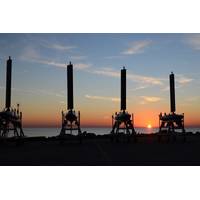
Autonomy: Sun, Sail & Subsea – Not a Holiday, but a Hybrid UxV Platform
sailboat-submarine was a novel idea being developed in a San Diego garage. Today, the company has a growing fleet of vehicles on the water and a $14 million funding injection to take it the next level. Elaine Maslin reports.Earlier this year, a great illustration of the ongoing adoption of marine autonomous systems was made through the International Maritime Exercise (IMX) 2022, a US-led training event involving 60 partner nations and international organizations. The event, held in the Middle East, was hailed as the largest unmanned exercise in the world with more than 80 unmanned/uncrewed systems
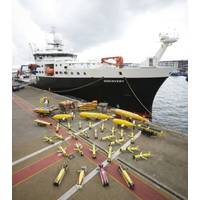
NOC: Advancing Autonomous Underwater Vehicles
and Robotics Systems group (MARS) [which includes AUVs, gliders, long-range unmanned surface vessels, and ROVs].Can you put in perspective the importance of unmanned autonomous systems to accomplishing the overall mission of the National Oceanography Center?As an engineer, I love AUVS, marine autonomous systems and robotics. But the Oceanography Center is here to deliver science, so these vehicles are basically taxis for sensors; they are part of the toolkit that we have to undertake in situ measurements within the world's oceans. They are important and they are growing in importance, certainly
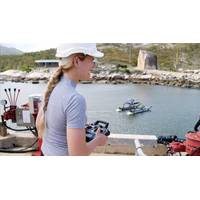
From Protecting National Sovereignty to Protecting the Reef
; newly established tropical marine technology test range, the first such facility in Australia.ReefWorks offers a national capability to test marine technologies, remotely-piloted and autonomous systems, and new sensors in a secure, tropical marine environment.It opens opportunities for the marine autonomous systems industry and Government organizations such as Defense to harness AIMS’ capability, tropical marine expertise and nimbleness in conducting test and evaluation, as well as enabling AIMS scientists and engineers to learn from colleagues in related industries.Mel has been the IEEE (Institute
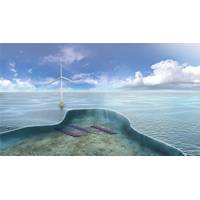
What's In Store for 2021? More Remote, More Data, More Autonomy
Late 2018, before net-zero targets had been agreed to by most western energy giants and nations, BP came out with a goal to reach 100% of subsea inspection by marine autonomous systems by 2025.It was a tangible goal then, and it’s one that might now be reached faster as remote and more “digitally” oriented operations take hold with greater opportunities for new nimble players in the market. It’s a goal being chased in the offshore wind sector too.Some of it is about emissions targets. Starting in 2019, the growing mass of pledges to net-zero targets by nations, upstream companies

VIDEO Interview: Steve Hall, Chief Executive, Society for Underwater Technology
service (was spent) on the policy end of the spectrum, helping governments draft laws and policies, developing the UK’s Marine Spatial Planning system, contributing to the UN system on how we look after resources in areas outside national jurisdiction, and also the law as it pertains to marine autonomous systems.In 2017 the opportunity to join SUT as the chief executive, so I applied for and got the job.Can you give to us an overview, a “by the numbers” look at SUT today?We are an international marine learning society formed in 1966. Many of the original members of SUT were Royal Navy

Cellula Robotics Partners with the NOC to Advance Marine Autonomy
Centre. Our interactions in getting to this point have shown that they have a truly collaborative approach to what they do, making them an ideal partner to engage with the community. There are a number of very obvious synergies between Cellula’s work and the NOC’s own work on marine autonomous systems, and this agreement enables us to explore how we can work together going forward.”Allan Spencer, Managing Director, Cellula Robotics UK Ltd., said, “We are delighted to be joining the Innovation Center. Many of our successfully developed products and systems have been the result
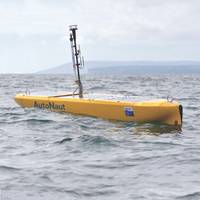
Drill Rig Noise: Entering the Exclusion Zone, Quietly
Unmanned surface vessels continue to make in-roads into new applications and industries. An ability to gather data in otherwise inaccessible locations is both increasing knowledge about marine noise and confidence in marine autonomous systems in the oil and gas industry. Elaine Maslin reports.Offshore oil and gas exploration and production activities have been going on since the mid-20th century. But the noise that drilling or production facilities emit into the marine environment and the impact they have on marine life isn’t perhaps as well quantified as it could be. That could be changing
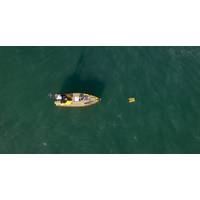
Deploying ROVs and AUVs from USVs
Marine autonomous systems and combinations of such systems are being increasingly put to the test in the offshore space. Elaine Maslin looks at how hybrid remote and autonomous systems are now being tested.Concepts like resident subsea vehicles, for inspection, repair and maintenance, are attractive options, but not the only ones being tried. Deploying remotely operated vehicles (ROVs) from unmanned surface vessels (USVs) are also being tested and put to use. It’s another way to take operators out of harm’s way, centralize operations and cut costs and environmental footprints. But, there&rsq



 February 2024
February 2024





